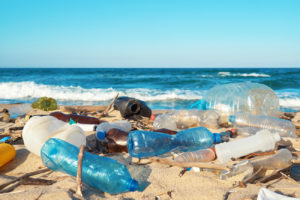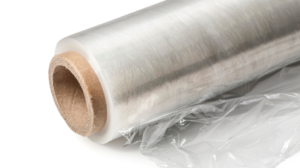Eliminate, Innovate, Circulate: Setting the Future for a Circular Plastics Economy
Of the nine billion tons of plastic manufactured since the early 1950s, only 9% has ever been recycled. The vast majority – nearly 80% – ended up in landfills and dumps or has leaked into our natural environment (the remainder has been incinerated). According to UNEP, our oceans could contain more plastic than fish by 2050 if current trends continue.
In the New Plastics Economy (NPE), a vision spearheaded by the Ellen MacArthur Foundation and supported by a broad group of stakeholders, plastics are engineered to never end up as waste or pollution. The NPE aims to shift our focus to innovations and business models which eradicate plastic waste, keep materials in use, and protect and restore our environment.
The Plastic Problem
Plastics have been one of the principal building materials of the modern consumer economy. They are versatile, lightweight, durable, chemically stable, and hygienic – all while being cheap to produce. No doubt this is why the production of plastics has increased twentyfold over the past fifty years.
But the unrivaled functional properties and proliferation of plastics have come at a cost. Most plastics are not biodegradable, instead breaking down slowly into small fragments called microplastics which can persist in the environment for centuries, and over half of all plastics produced are designed as single-use.
Plastic waste is now so ubiquitous and deeply embedded into the Earth’s ecosystems, food chains, and strata, that some scientists have suggested plastics will be used as a geological indicator of the Anthropocene era.
The plastic waste problem is snowballing: half of all plastics ever manufactured have been made in the last 15 years, largely driven by demand for plastic packaging and the rise of plastic single-use containers, wrapping, and bottles. Even today, 40 years after the launch of the first universal recycling symbol, only 14% of global plastic packaging per year is collected for recycling.
What is the New Plastics Economy?
The NPE applies the principles of a circular economy to the plastic production and consumption cycle. In circular economies, materials are designed to be used, but not to be used up. The aims of the NPE are to:
- Create an effective after-use plastics economy
- Significantly reduce the leakage of plastic waste into natural systems, plus any other negative externalities
- Gradually decouple the virgin plastics we may need to produce from finite resources (i.e., fossil fuel stock)
In two influential reports, published in 2016 and 2017, the Ellen MacArthur Foundation and the World Economic Forum (WEF) outlined six working priorities for the NPE:
- Eliminate problematic or unnecessary plastic packaging through redesign, innovation, and new delivery models. If collection and recycling infrastructure were scaled for everyone on the planet, it would require connecting over half of a million people to formal collection systems every day between now and 2040. While improving recycling methods is important, we cannot recycle our way out of the plastics problem, and unnecessary plastic use must be eliminated in the first place. The NPE provides a huge innovation opportunity to rethink how packaging, products, and systems can deliver products to consumers without generating plastic waste.
- Install reuse models where possible and reduce the need for single-use packaging. Recycling can keep raw material within the economy and stop it from becoming waste, but the value and embedded energy, and environmental costs of creating the packaging are still lost. It is better to reuse plastics in their original form wherever possible. Reusable models also unlock significant commercial benefits. For example, costs of production, transport, and logistics can be reduced through the adoption of standardized packaging formats and by supplying compact refills for reusable containers. Businesses could also drive brand loyalty through deposit and reward schemes, and creating reusable packaging which customers can make on their own.
- All plastic packaging must be designed to be 100% reusable, recyclable, or compostable. Today, 98% of plastic packaging is produced from virgin feedstock. Plastics must be designed to be easily collected, sorted, reused, recycled, or composted by real-world existing infrastructure.
- In practice, all plastic packaging must be reused, recycled, or composted. Landfill, incineration, and waste-to-energy processes are not part of the NPE. They are linear systems that result in the original material being lost after a single use, usually polluting the environment in the process. We will need new and better recycling infrastructure across the world, which will be enabled by governments and policymakers. Businesses must also take responsibility for their plastic products post-sale, contributing to their collection and minimizing their environmental impact.
- Fully decouple the production of plastic from the consumption of finite resources. The goal of the NPE is to dramatically reduce the use of virgin plastics. For any virgin plastic produced, however, they should not be made from finite resources (in particular, fossil fuels) but from renewable resources which can be responsibly managed and are environmentally beneficial. The logistical system around plastics – production, transport, cleaning, and recycling – must also be powered by renewable sources of energy.
- Design all plastic products to be free from hazardous chemicals and ensure the health, rights, and safety of all people involved is respected. Plastics contain a myriad of chemicals aside from plastic polymers. These can be intentionally added to improve the flexibility or durability of the material, but others are unintentionally created during the manufacturing process. We urgently need more research and greater transparency into the effects of these chemical by-products on human health and the environment. In the NPE, all plastic packaging is free of hazardous chemicals.
For further reading and references, visit AZO Clean Tech.



